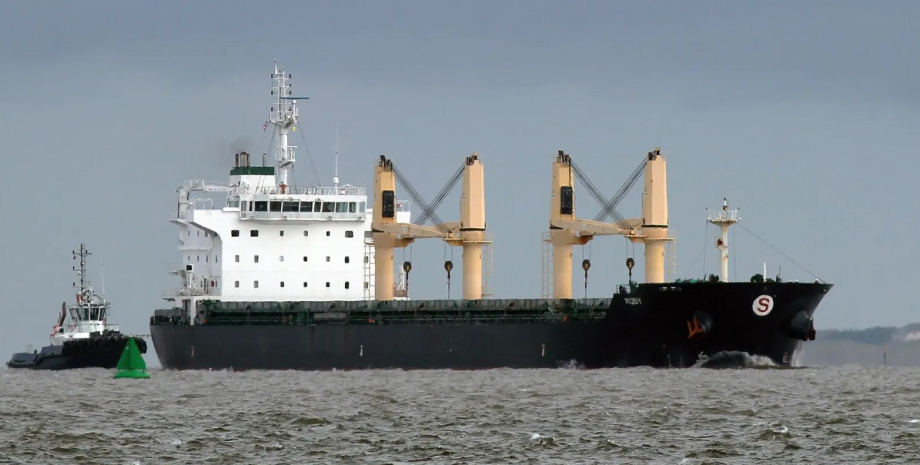
 By Natali Moss
By Natali Moss
Transatlantic security experts believe that his recent long trip to Europe with a load of dangerous substance ammonium nitrate was a test of EU for vigilance. The NZZ was told about Rubin and his journey. Jacob Karasbo, a Transatlantic Security Specialist and Senior Analyst of the European Analytical Center in Copenhagen, became interested in Tanker's journey.
In recent weeks, he closely followed the movement of the Rubin tanker and says, "I think it is very unlikely that the ship intended to carry fertilizers from point A to point B. Karasbo is convinced that Rubin is traveling on behalf of the Kremlin. His thesis: "It is about testing of Western powers.
" How do countries respond when a ship with a dangerous cargo is approaching cities or critical infrastructure? If the authorities are surprised how it acts? Will the ship enter the port? According to Kaarsbo, during the Voyage "Rubina" the Kremlin received answers to the questions that in the future could be useful for hybrid surgery.
It reminds that from the beginning of a full -scale invasion of Russia into Ukraine, amazing incidents have increased in Europe: trains leave the rails, GPS signals stumble, migrants from third countries, such as Yemen and Somalia, appear on the eastern border of Finland. At first glance, events seem not related to each other, but the facts point in one direction: Moscow. Experts talk about hybrid attacks. The Kremlin tries to create uncertainty.
Rubin also got into newspaper headlines and has caused stir in recent weeks. The ammonium nitrate on board the cargo vessel led to a Birut explosion in 2020, which resulted in 218 people. But daily seas are traveled by countless ships that carry dangerous goods. Russia is one of the largest producers of ammonium nitrate, and Laspalmas is one of the most important ports through which Russia transports goods to Africa. This is not suspected yet.
But Karasbo believes that the Rubin tanker is an unusual cargo ship. The property structure gives the first hint: "Rubin" goes under the Malta flag and is managed by the company in Lebanon. It is reported that the ship belongs to the Syrian company Samin Shipping and transports Russian goods. Karasbo believes that "Rubin" is part of the shadow fleet of Russia. After the attack on Ukraine, Western countries severely restricted trade with Russia.
Putin bypasses Western sanctions with the help of the so -called shadow fleet. These include outdated vessels that go under the flags of third countries and transport goods from Russia to the world to sanctions, such as oil or liquefied natural gas (LNG). There is no ammonium nitrate in the list of sanctions, but Rubina could have another mission. The doubts about the intentions of the Ruby ship arise if you look at the ship's route.
On August 22, the Rubin True is leaving the Russian port city of Kandalasha. On board: 20,000 tons of ammonium nitrate, explosive fertilizer. Judging by the onboard magazine, the cargo is planned to be delivered to Laspalms in the Spanish Canary Islands. To the south of the Kola Peninsula, a vessel sits on a shallow, but does not return to Russia, does not ask for help, but continues the journey to the Norwegian Sea. The ship was again in trouble north of Norway.
On the night of August 25, Rubin entered the Norwegian economic zone - probably the ship was looking for a shelter from the storm. But Kaarsbo notes that Rubin's problems occurred when the tanker was approaching critical infrastructure. He changed the course in front of Tromose's port city, in front of Andodai Island, where the military base and the cosmooder are located, instead of the laspopmas, his destination became Lithuanian Klaipeda, and then he suddenly headed on Malta.
The disorderly voyage of the tanker did not go unnoticed, the media called him "floating Russian bomb", and the authorities of the countries where he sailed, showed vigilance: Norway sent tugboats to accompany "Rubin", Denmark, Sweden and Lithuan dangerous cargo in their ports. The tanker is now in the North Sea. Denmark has long wanted to limit the passage of suspicious tankers through the Great Belt, the strait that connects the Strait of Kattegat and the Baltic Sea.
And it is not only about imposing sanctions against Russia. The shadow fleet is a danger to the environment, since the ships not only are in poor condition, but also go with crews who are not familiar with the Baltic Sea, which is difficult to maneuver. Rubina's case is a kind of victory. But Karasbo believes that Russia will continue to test the reaction of NATO and the EU, sending ships and counting on marine mutilation, pursuing its own goals.










All rights reserved IN-Ukraine.info - 2022